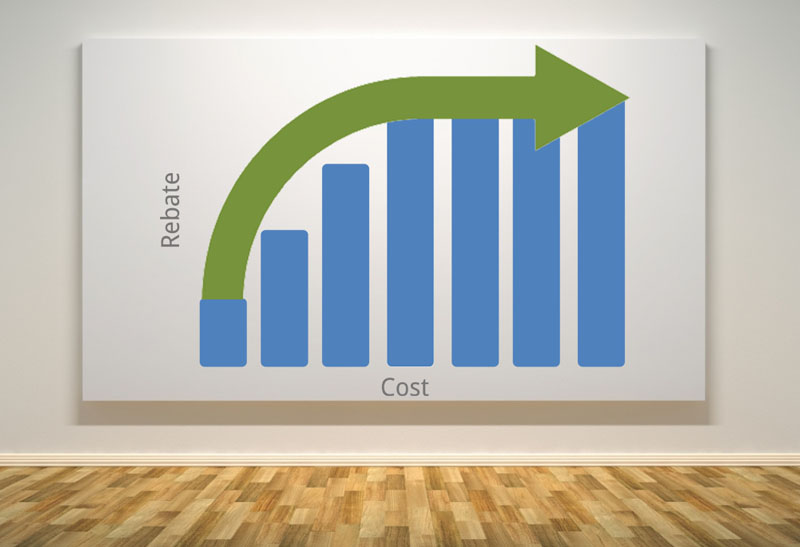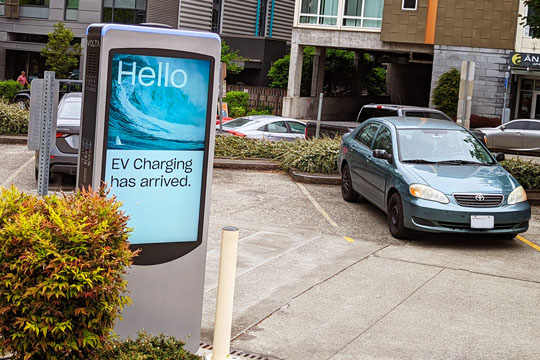Many people are disappointed when they see a high advertised rebate amount to only later get a much smaller rebate than expected. This discrepancy can happen because of cost caps. In the fine print on most rebate applications in North America, there is a cap of how much of the cost they will cover. This way, rebate programs ensure customers also contribute a fair amount towards the new lighting.
We conducted an in-depth analysis of cost caps using our RebatePro tool to see their impact on the actual rebate amount.

Material cost or project cost?
Cost caps are based on either material cost or project cost (which is usually material cost plus labor cost, disposal fees, etc). According to our research, 37% of the rebate programs have cost caps based on material cost, while the other 63% are based on project cost. In some cases, the program may allow you to include internal costs (such as having an employee switch out lamps rather than an electrician) in the project cost with the appropriate documentation.
How much do they cover?
We see a lot of distributors and contractors looking for that golden opportunity, where they can sell lighting to their customers and have a rebate pay for all of it. Unfortunately, that isn’t that common anymore; only 8% of programs cover up to 100% of the total project costs. Much more common cost caps are 100% material cost and 50% of the project cost. Keep in mind, these are just the cost caps; the rebate will still not exceed the determined incentive amount (i.e., the prescriptive or custom rebate amount).
What is the impact on the rebate amount?
If you see a rebate program showing $15 per LED tube, make sure you read all the fine print going along with it. The actual rebate you get might be much lower.
Here’s an example showing the average rebate across North America for a 4’ LED Tube and how it changes based on the price.
| Sales Price | Average Rebate After Cap |
|---|---|
| $5 | $2.65 |
| $10 | $3.44 |
| $15 | $3.81 |
Midstream rebates and caps
 Midstream rebates, where the incentive is offered directly through a distributor and then taken off the invoice, usually operate a little differently. In many cases, these programs use a minimum customer contribution rather than a percentage of the cost. For example, a utility may offer a midstream rebate of $10 per fixture, but require the customer to contribute a minimum of $5 after the incentive.
Midstream rebates, where the incentive is offered directly through a distributor and then taken off the invoice, usually operate a little differently. In many cases, these programs use a minimum customer contribution rather than a percentage of the cost. For example, a utility may offer a midstream rebate of $10 per fixture, but require the customer to contribute a minimum of $5 after the incentive.
How to understand your cost caps
As you can see, cost caps can play a big role in the final rebate amount. If you’re working on a project, make sure you read the fine print and fully understand the cost caps involved. When in doubt, you can contact us for assistance.
If you’re a distributor or contractor looking for the best rebates in the entire country, it’s also important to note the cost caps. The Top Rebates Report in RebatePro makes it easy by taking all these factors into account when identifying the best rebate areas.
Ask Us About Your Project




